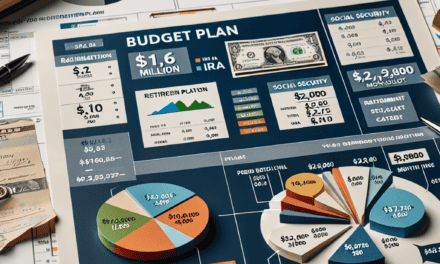“Bitcoin Soars to New Heights: Post-Trump Victory Sparks Fed Rate Cut Speculation, BTC Reaches $76K”
Introduction
Bitcoin’s future is poised for significant developments following a hypothetical Trump victory, with traders closely monitoring potential Federal Reserve rate cuts as the cryptocurrency reaches a milestone of $76,000. This scenario suggests a complex interplay between political shifts, monetary policy, and market dynamics, which could influence Bitcoin’s trajectory. As investors anticipate changes in fiscal strategies and economic policies, the cryptocurrency market may experience heightened volatility and opportunities. The prospect of reduced interest rates could further fuel Bitcoin’s appeal as a hedge against inflation and traditional financial systems, potentially driving its value to new heights.
Impact Of Fed Rate Cuts On Bitcoin’s Market Dynamics
In the wake of Donald Trump’s recent electoral victory, the financial markets have been abuzz with speculation about the potential implications for various asset classes, particularly cryptocurrencies. Bitcoin, the flagship digital currency, has surged to an unprecedented $76,000, capturing the attention of traders and investors worldwide. This remarkable ascent can be attributed, in part, to the anticipation of Federal Reserve rate cuts, which are expected to have a profound impact on Bitcoin’s market dynamics.
To understand the relationship between Federal Reserve policies and Bitcoin, it is essential to consider the broader economic context. Historically, interest rate cuts by the Federal Reserve have been employed as a tool to stimulate economic growth by making borrowing cheaper and encouraging spending. In the current scenario, with Trump’s victory signaling potential shifts in fiscal policy, market participants are closely monitoring the Federal Reserve’s response. The expectation of rate cuts has already begun to influence investor behavior, driving capital flows into alternative assets like Bitcoin.
Bitcoin’s appeal as a hedge against traditional financial market volatility is well-documented. As the Federal Reserve contemplates rate cuts, the prospect of lower yields on traditional investments such as bonds becomes more likely. Consequently, investors seeking higher returns may increasingly turn to Bitcoin, which is perceived as a store of value and a potential safeguard against inflation. This shift in investor sentiment is a key factor contributing to Bitcoin’s recent price surge.
Moreover, the decentralized nature of Bitcoin makes it an attractive option for those wary of centralized monetary policies. As the Federal Reserve potentially embarks on a path of monetary easing, concerns about currency devaluation and inflationary pressures may drive more individuals and institutions to consider Bitcoin as a viable alternative. This growing interest is further amplified by the increasing acceptance of Bitcoin in mainstream financial systems, with more companies and financial institutions integrating cryptocurrency solutions into their operations.
In addition to these macroeconomic factors, the psychological impact of Trump’s victory cannot be underestimated. Political events often serve as catalysts for market movements, and the uncertainty surrounding potential policy changes can lead to increased volatility. Traders, therefore, are keenly observing the evolving political landscape and its implications for Bitcoin’s trajectory. The anticipation of rate cuts, coupled with the political climate, creates a fertile ground for speculative trading, further fueling Bitcoin’s upward momentum.
However, it is important to note that while the prospect of Federal Reserve rate cuts presents opportunities for Bitcoin, it also introduces risks. The cryptocurrency market is notoriously volatile, and rapid price fluctuations can occur in response to unexpected developments. Traders must remain vigilant and consider the potential for sudden reversals in market sentiment. Additionally, regulatory scrutiny of cryptocurrencies continues to evolve, and any adverse regulatory actions could impact Bitcoin’s market dynamics.
In conclusion, the interplay between Federal Reserve rate cuts and Bitcoin’s market dynamics is a complex and multifaceted phenomenon. As traders and investors navigate this evolving landscape, they must weigh the potential benefits of Bitcoin as a hedge against traditional market risks against the inherent volatility and regulatory uncertainties. The coming months will undoubtedly be pivotal in shaping Bitcoin’s future, as market participants closely monitor the Federal Reserve’s actions and their implications for the broader financial ecosystem.
Analyzing Bitcoin’s Price Surge To $76K: Factors And Implications
In the wake of Donald Trump’s unexpected victory in the recent presidential election, Bitcoin has experienced a remarkable surge, reaching an unprecedented high of $76,000. This significant price increase has captured the attention of traders and investors worldwide, prompting a closer examination of the factors contributing to this surge and the potential implications for the future of Bitcoin. As the cryptocurrency market continues to evolve, understanding the dynamics at play is crucial for stakeholders seeking to navigate this volatile landscape.
One of the primary factors driving Bitcoin’s recent price surge is the anticipation of potential Federal Reserve rate cuts. With Trump’s victory, there is widespread speculation that his administration may exert pressure on the Federal Reserve to adopt a more accommodative monetary policy. Historically, lower interest rates have been associated with increased investment in riskier assets, including cryptocurrencies. As traditional investment avenues offer diminishing returns, investors are increasingly turning to Bitcoin as a hedge against inflation and economic uncertainty. This shift in investor sentiment has undoubtedly contributed to the upward momentum in Bitcoin’s price.
Moreover, the broader macroeconomic environment has played a significant role in Bitcoin’s ascent. The global economy is currently grappling with a myriad of challenges, including geopolitical tensions, supply chain disruptions, and lingering effects of the COVID-19 pandemic. These factors have collectively fostered an environment of uncertainty, prompting investors to seek refuge in alternative assets. Bitcoin, often referred to as “digital gold,” has emerged as a preferred store of value, attracting both institutional and retail investors seeking to diversify their portfolios and mitigate risk.
In addition to macroeconomic factors, technological advancements within the cryptocurrency space have also bolstered Bitcoin’s appeal. The ongoing development of blockchain technology and the increasing adoption of decentralized finance (DeFi) platforms have enhanced the utility and accessibility of cryptocurrencies. As more businesses and consumers embrace digital currencies for transactions and investments, the demand for Bitcoin continues to rise. This growing acceptance and integration into mainstream financial systems further solidify Bitcoin’s position as a viable asset class.
However, it is essential to acknowledge the inherent volatility and risks associated with Bitcoin investments. While the recent price surge is undoubtedly enticing, it is crucial for investors to exercise caution and conduct thorough due diligence. The cryptocurrency market is notoriously unpredictable, with prices subject to rapid fluctuations driven by market sentiment and external factors. As such, investors must remain vigilant and adopt a long-term perspective when considering Bitcoin as part of their investment strategy.
Looking ahead, the future of Bitcoin remains uncertain, yet promising. The potential for further Federal Reserve rate cuts, coupled with ongoing technological advancements and increasing institutional adoption, suggests that Bitcoin may continue to experience upward momentum. Nevertheless, regulatory developments and market dynamics will play a pivotal role in shaping Bitcoin’s trajectory. As governments and financial institutions grapple with the implications of digital currencies, the regulatory landscape is likely to evolve, impacting Bitcoin’s growth and adoption.
In conclusion, Bitcoin’s recent surge to $76,000 can be attributed to a confluence of factors, including expectations of Federal Reserve rate cuts, macroeconomic uncertainty, and technological advancements. While the future of Bitcoin remains uncertain, its growing acceptance and integration into mainstream financial systems underscore its potential as a transformative asset. As traders and investors navigate this dynamic landscape, a comprehensive understanding of the factors influencing Bitcoin’s price is essential for making informed decisions and capitalizing on emerging opportunities.
The Role Of Institutional Investors In Bitcoin’s Post-Trump Victory Rally
In the wake of Donald Trump’s unexpected victory in the recent presidential election, the financial markets have been abuzz with speculation and strategic repositioning. Among the most notable developments is the remarkable rally in Bitcoin, which has surged to an unprecedented $76,000. This surge has been largely attributed to the anticipation of potential Federal Reserve rate cuts, a prospect that has invigorated traders and investors alike. However, a critical factor underpinning this rally is the role of institutional investors, whose influence on the cryptocurrency market has grown significantly in recent years.
Institutional investors, including hedge funds, asset managers, and large corporations, have increasingly turned their attention to Bitcoin as a viable asset class. This shift has been driven by a combination of factors, including the search for alternative investments in a low-yield environment and the growing recognition of Bitcoin as a hedge against inflation. In the context of the post-Trump victory landscape, these investors are particularly attuned to the potential for monetary policy shifts that could impact traditional financial markets. Consequently, their participation in the Bitcoin market has been both strategic and substantial.
The anticipation of Federal Reserve rate cuts has been a key driver of institutional interest in Bitcoin. With the possibility of a more accommodative monetary policy under the new administration, institutional investors are positioning themselves to capitalize on the potential depreciation of the U.S. dollar. Bitcoin, often referred to as “digital gold,” is perceived as a store of value that can protect against currency devaluation. This perception has been bolstered by Bitcoin’s limited supply and decentralized nature, which contrast sharply with the expansive monetary policies that have characterized recent years.
Moreover, the infrastructure supporting institutional investment in Bitcoin has matured significantly. The development of regulated exchanges, custodial services, and financial products such as Bitcoin futures and exchange-traded funds (ETFs) has facilitated greater participation by institutional players. These advancements have not only enhanced the accessibility of Bitcoin but have also contributed to its legitimacy as an asset class. As a result, institutional investors are now able to engage with Bitcoin in a manner that aligns with their risk management frameworks and regulatory requirements.
In addition to the macroeconomic factors and infrastructural developments, the strategic considerations of institutional investors are also shaped by the evolving competitive landscape. As more institutions enter the Bitcoin market, there is a growing recognition of the need to secure a foothold in this burgeoning asset class. This competitive dynamic has further fueled the demand for Bitcoin, as institutions seek to establish themselves as early adopters and innovators in the digital currency space.
While the post-Trump victory rally in Bitcoin has been impressive, it is important to recognize that the involvement of institutional investors is not without its challenges. The volatility inherent in the cryptocurrency market poses significant risks, and the regulatory environment remains uncertain. Nevertheless, the commitment of institutional investors to Bitcoin underscores their confidence in its long-term potential and their willingness to navigate the complexities of this emerging market.
In conclusion, the role of institutional investors in Bitcoin’s post-Trump victory rally is a testament to the growing acceptance and integration of digital currencies into the broader financial ecosystem. As traders continue to eye potential Federal Reserve rate cuts, the influence of institutional investors will likely remain a pivotal factor in shaping the trajectory of Bitcoin and the cryptocurrency market as a whole.
Bitcoin’s Future In A Changing Political Landscape: Opportunities And Challenges
In the wake of Donald Trump’s unexpected victory in the recent presidential election, the financial landscape is poised for significant shifts, with Bitcoin at the forefront of these changes. As traders and investors navigate this new political era, the cryptocurrency market is experiencing a surge of interest, particularly as Bitcoin reaches an unprecedented high of $76,000. This remarkable milestone is not only a testament to Bitcoin’s resilience but also a reflection of the broader economic dynamics at play, particularly the anticipation of potential Federal Reserve rate cuts.
The intersection of politics and cryptocurrency is not a novel phenomenon, yet Trump’s return to the political arena introduces a fresh set of variables that could influence Bitcoin’s trajectory. Historically, Bitcoin has been perceived as a hedge against economic uncertainty and inflation, a narrative that gains traction in times of political upheaval. With Trump’s victory, there is renewed speculation about the future of fiscal policies and their impact on traditional financial systems. Consequently, Bitcoin’s appeal as a decentralized asset is likely to grow, attracting both seasoned investors and newcomers seeking refuge from potential market volatility.
Moreover, the anticipation of Federal Reserve rate cuts adds another layer of complexity to Bitcoin’s future. The Federal Reserve’s monetary policy decisions have long been a critical factor in shaping market sentiment. In the current context, the possibility of rate cuts is being closely monitored by traders who view such measures as a catalyst for Bitcoin’s continued ascent. Lower interest rates typically lead to a weaker dollar, which can enhance the attractiveness of alternative assets like Bitcoin. As a result, the cryptocurrency market is abuzz with speculation about how these potential policy shifts could further bolster Bitcoin’s value.
However, it is essential to consider the challenges that accompany these opportunities. The regulatory environment surrounding cryptocurrencies remains a contentious issue, with governments worldwide grappling with how to effectively oversee this rapidly evolving sector. In the United States, the regulatory stance could be influenced by the new administration’s priorities, potentially leading to stricter oversight or, conversely, more favorable conditions for innovation. Traders and investors must remain vigilant, as regulatory changes could significantly impact market dynamics and Bitcoin’s long-term prospects.
Furthermore, the technological advancements within the cryptocurrency space continue to shape Bitcoin’s future. The ongoing development of blockchain technology and the increasing adoption of Bitcoin by mainstream financial institutions underscore the growing legitimacy of digital currencies. These advancements not only enhance Bitcoin’s utility but also contribute to its perception as a viable asset class. As institutional interest in Bitcoin grows, so too does the potential for increased market stability and liquidity, factors that could mitigate some of the volatility traditionally associated with cryptocurrencies.
In conclusion, Bitcoin’s future in the aftermath of Trump’s victory is characterized by a complex interplay of opportunities and challenges. The potential for Federal Reserve rate cuts presents a promising outlook for Bitcoin’s continued growth, while the evolving regulatory landscape and technological advancements offer both potential benefits and hurdles. As traders and investors navigate this changing political and economic environment, Bitcoin’s role as a transformative financial asset is likely to be further solidified. The coming months will undoubtedly be pivotal in determining how these factors converge to shape the future of Bitcoin and the broader cryptocurrency market.
How Fed Policies Could Shape Bitcoin’s Trajectory In The Coming Years
In the wake of Donald Trump’s recent electoral victory, the financial landscape is poised for significant shifts, particularly in the realm of cryptocurrency. Bitcoin, the flagship digital currency, has surged to an unprecedented $76,000, capturing the attention of traders and investors worldwide. This remarkable ascent is not merely a reflection of market exuberance but is intricately linked to anticipated changes in Federal Reserve policies. As traders keenly observe the potential for Fed rate cuts, the trajectory of Bitcoin in the coming years could be profoundly influenced by these monetary policy decisions.
To understand the potential impact of Federal Reserve policies on Bitcoin, it is essential to consider the broader economic context. Historically, Bitcoin has often been viewed as a hedge against inflation and a store of value, akin to digital gold. In periods of economic uncertainty or when traditional fiat currencies face devaluation, Bitcoin’s appeal tends to increase. With Trump’s victory, there is speculation that his administration may advocate for policies that could lead to economic volatility, thereby enhancing Bitcoin’s attractiveness as a safe haven asset.
Moreover, the Federal Reserve’s approach to interest rates plays a crucial role in shaping the economic environment. Lower interest rates generally lead to a decrease in the cost of borrowing, which can stimulate economic activity but also potentially lead to inflationary pressures. In such scenarios, investors often seek assets that can preserve value, and Bitcoin, with its limited supply and decentralized nature, becomes an appealing option. Consequently, if the Federal Reserve opts for rate cuts in response to economic conditions under the new administration, Bitcoin could see increased demand as investors look to safeguard their wealth.
Furthermore, the relationship between Bitcoin and traditional financial markets is becoming increasingly intertwined. As institutional investors and major financial entities continue to embrace Bitcoin, its price movements are more closely linked to macroeconomic factors. This growing integration means that Federal Reserve policies, which significantly impact traditional markets, will likely have a more pronounced effect on Bitcoin’s price dynamics. For instance, a dovish stance by the Fed, characterized by rate cuts, could lead to a surge in liquidity in the financial system, some of which may flow into Bitcoin, driving its price higher.
In addition to interest rate policies, the Federal Reserve’s broader monetary policy framework, including quantitative easing measures, could also influence Bitcoin’s future trajectory. Should the Fed decide to implement or expand such measures, the resulting increase in money supply could lead to concerns about currency devaluation. In this context, Bitcoin’s fixed supply and decentralized nature make it an attractive alternative for those seeking to hedge against potential fiat currency depreciation.
As we look to the future, it is clear that the interplay between Federal Reserve policies and Bitcoin’s market dynamics will be a critical factor in determining the digital currency’s trajectory. While the exact path remains uncertain, the potential for rate cuts and other accommodative monetary policies under the Trump administration could create a favorable environment for Bitcoin’s continued growth. Traders and investors will undoubtedly keep a close watch on the Federal Reserve’s actions, as these decisions will likely play a pivotal role in shaping Bitcoin’s future in the coming years. In this evolving landscape, understanding the nuances of monetary policy and its implications for digital assets will be essential for those looking to navigate the complexities of the cryptocurrency market.
Comparing Bitcoin’s Performance In Different Political Eras
In the ever-evolving landscape of cryptocurrency, Bitcoin has consistently been a focal point for investors and analysts alike. The recent political shift, marked by Donald Trump’s return to the presidency, has once again brought Bitcoin into the spotlight. As Bitcoin reaches an unprecedented high of $76,000, traders are keenly observing the potential implications of this political change, particularly in relation to the Federal Reserve’s monetary policy. Historically, Bitcoin’s performance has been influenced by a myriad of factors, including political climates, economic policies, and market sentiment. Therefore, understanding its trajectory in different political eras can provide valuable insights into its future.
During Trump’s first term, Bitcoin experienced significant volatility, with its price fluctuating dramatically. This period was characterized by a deregulatory approach to financial markets, which, coupled with a burgeoning interest in digital currencies, contributed to Bitcoin’s initial surge. However, the subsequent regulatory uncertainties and market corrections highlighted the cryptocurrency’s susceptibility to political and economic shifts. In contrast, the Biden administration’s tenure saw a more cautious approach towards cryptocurrencies, with increased regulatory scrutiny and discussions around central bank digital currencies. This environment fostered a sense of caution among investors, leading to a more tempered growth trajectory for Bitcoin.
Now, as Trump reclaims the presidency, traders are speculating on how his administration’s policies might impact Bitcoin’s future. One of the key areas of focus is the Federal Reserve’s stance on interest rates. Historically, lower interest rates have been favorable for Bitcoin, as they tend to weaken the dollar and drive investors towards alternative assets. With Trump’s administration potentially advocating for rate cuts to stimulate economic growth, Bitcoin could see renewed interest as a hedge against inflation and currency devaluation.
Moreover, the broader economic context cannot be ignored. The global economy is currently navigating a complex landscape, marked by post-pandemic recovery efforts, geopolitical tensions, and supply chain disruptions. In such a scenario, Bitcoin’s appeal as a decentralized and borderless asset may be further amplified. Investors seeking to diversify their portfolios and mitigate risks associated with traditional financial systems might increasingly turn to Bitcoin, driving its demand and price upwards.
However, it is crucial to acknowledge the inherent risks and uncertainties that accompany Bitcoin’s journey. The cryptocurrency market remains highly speculative, and external factors such as regulatory changes, technological advancements, and market sentiment can significantly influence its performance. As such, while the prospect of Fed rate cuts under Trump’s administration may present opportunities for Bitcoin, it also underscores the need for cautious optimism among traders and investors.
In conclusion, comparing Bitcoin’s performance across different political eras reveals a complex interplay of factors that shape its trajectory. The current political shift, marked by Trump’s victory, introduces new dynamics that could influence Bitcoin’s future. As traders eye potential Fed rate cuts, Bitcoin’s recent surge to $76,000 serves as a testament to its resilience and adaptability. Nevertheless, navigating this landscape requires a nuanced understanding of the broader economic and political context, as well as a recognition of the inherent risks associated with cryptocurrency investments. As the world continues to grapple with uncertainty, Bitcoin’s role as a digital asset and store of value will undoubtedly remain a topic of keen interest and debate.
The Influence Of Macroeconomic Trends On Bitcoin’s Long-Term Growth
In the wake of Donald Trump’s recent electoral victory, the financial landscape is poised for significant shifts, with traders and investors closely monitoring the potential implications for various asset classes, including Bitcoin. As Bitcoin’s price surges to an unprecedented $76,000, the cryptocurrency market is abuzz with speculation about the future trajectory of this digital asset. Central to this discussion is the influence of macroeconomic trends, particularly the anticipated actions of the Federal Reserve regarding interest rate cuts, which could play a pivotal role in shaping Bitcoin’s long-term growth.
To understand the potential impact of these macroeconomic trends on Bitcoin, it is essential to consider the broader economic context. Historically, Bitcoin has often been viewed as a hedge against inflation and economic uncertainty. In periods of economic instability or when traditional fiat currencies face devaluation, Bitcoin’s decentralized nature and limited supply have made it an attractive alternative for investors seeking to preserve their wealth. Consequently, any macroeconomic developments that influence inflationary pressures or currency stability are likely to have a direct bearing on Bitcoin’s appeal and valuation.
With Trump’s victory, market participants are keenly observing the Federal Reserve’s policy direction. The possibility of interest rate cuts looms large, as the new administration may prioritize economic growth and job creation, potentially at the expense of tighter monetary policy. Should the Federal Reserve opt to lower interest rates, the resulting environment of cheaper borrowing costs and increased liquidity could stimulate investment in riskier assets, including Bitcoin. This scenario could further bolster Bitcoin’s price, as investors seek higher returns in a low-interest-rate environment.
Moreover, the relationship between interest rates and Bitcoin is not merely speculative. Empirical evidence suggests that lower interest rates often correlate with increased investment in alternative assets. As traditional savings vehicles offer diminished returns, investors are more inclined to explore opportunities in the cryptocurrency market. This shift in investment behavior could drive further demand for Bitcoin, reinforcing its upward momentum and solidifying its position as a mainstream asset class.
In addition to interest rate considerations, other macroeconomic factors are also at play. The global economic landscape is characterized by geopolitical tensions, trade uncertainties, and evolving regulatory frameworks, all of which contribute to market volatility. Bitcoin, with its borderless and decentralized nature, offers a degree of insulation from these geopolitical risks, making it an attractive option for investors seeking diversification and risk mitigation.
Furthermore, the increasing institutional adoption of Bitcoin cannot be overlooked. As more financial institutions and corporations integrate Bitcoin into their portfolios and payment systems, the cryptocurrency’s legitimacy and acceptance continue to grow. This institutional interest not only enhances Bitcoin’s liquidity but also underscores its potential as a long-term store of value, further influenced by macroeconomic trends.
In conclusion, the interplay between macroeconomic trends and Bitcoin’s long-term growth is complex and multifaceted. As traders and investors navigate the post-Trump victory landscape, the potential for Federal Reserve rate cuts and other economic developments will undoubtedly shape Bitcoin’s future trajectory. While uncertainties remain, the convergence of these factors suggests that Bitcoin’s role in the global financial system is poised to expand, driven by its unique attributes and the evolving macroeconomic environment. As such, Bitcoin’s journey from a niche digital asset to a mainstream financial instrument appears increasingly plausible, with macroeconomic trends serving as both a catalyst and a barometer for its continued growth.
Q&A
1. **What impact could a Trump victory have on Bitcoin’s future?**
A Trump victory might lead to increased market volatility and uncertainty, potentially driving investors to seek alternative assets like Bitcoin as a hedge.
2. **How might traders react to potential Federal Reserve rate cuts?**
Traders may anticipate that rate cuts could weaken the US dollar, making Bitcoin more attractive as a store of value and potentially driving its price higher.
3. **Why is Bitcoin’s price hitting $76K significant?**
Reaching $76K would mark a new all-time high for Bitcoin, signaling strong market confidence and increased adoption or investment interest.
4. **What factors could contribute to Bitcoin reaching $76K?**
Factors could include increased institutional investment, growing acceptance of Bitcoin as a legitimate asset class, and macroeconomic conditions favoring alternative investments.
5. **How might Bitcoin’s role as a hedge against inflation influence its future?**
As inflation concerns persist, Bitcoin could be increasingly viewed as a digital gold, attracting investors looking to protect their wealth from currency devaluation.
6. **What are the potential risks to Bitcoin’s future post-Trump victory?**
Regulatory crackdowns, technological challenges, or a shift in investor sentiment could pose risks to Bitcoin’s continued growth and adoption.
7. **How could geopolitical events influence Bitcoin’s trajectory?**
Geopolitical tensions or economic instability could drive demand for decentralized and non-sovereign assets like Bitcoin, potentially boosting its price and adoption.
Conclusion
Bitcoin’s future following a hypothetical Trump victory and the subsequent market dynamics could be significantly influenced by traders’ expectations of Federal Reserve rate cuts. If Bitcoin reaches $76,000, it may reflect a combination of increased investor confidence, potential inflationary concerns, and a search for alternative assets amidst economic policy shifts. The anticipation of rate cuts could further drive investment into Bitcoin as a hedge against traditional market volatility and currency devaluation. However, this scenario also carries risks, including regulatory scrutiny and market speculation, which could impact Bitcoin’s stability and growth. Overall, Bitcoin’s trajectory will likely depend on a complex interplay of political, economic, and market factors, with traders closely monitoring policy changes and their implications for the cryptocurrency landscape.





